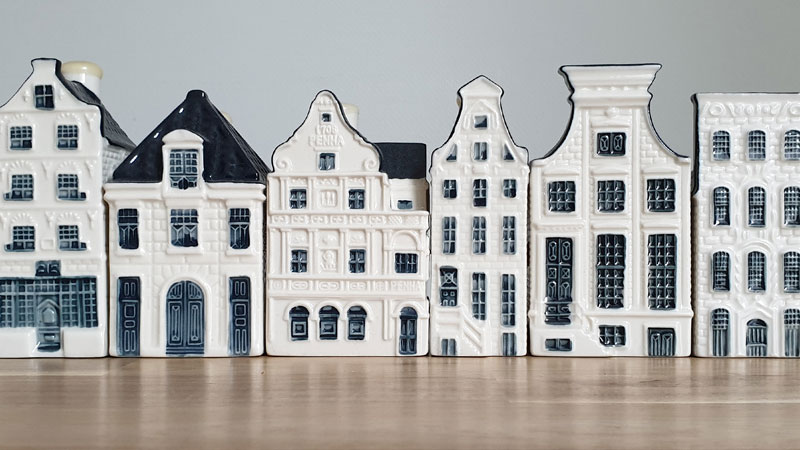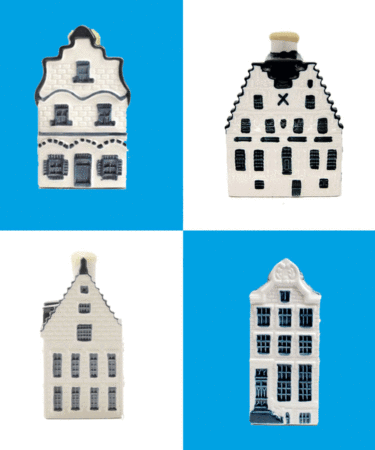There are plenty of fun collectibles in the world of booze, from beer labels to walls filled with thousands of mini bottles. Some people save Blanton’s horse-and-jockey bottle stoppers. Some folks hunt down old Jim Beam ceramic decanters — with so many local clubs that there’s even an umbrella organization called the IAJBBSC, or International Association of Jim Beam Bottle and Specialties Clubs. Some dedicate their lives to collecting wine labels.
And then there are the delftware spirits bottles from KLM Royal Dutch Airlines.
As far as alcoholic collectibles go, this is rather niche — after all, you’re talking about a promotional product for an Old World airline, not a brewery or distillery. Unlike most bottles, KLM’s collectibles actually look like real houses — specifically, historic Dutch buildings, from the Rembrandt House Museum to the old Heineken brewery. And while many collectors refer to their contents as “gin,” the bottles are filled with either gin or gin’s Low Countries forebear, genever, both sourced from the Bols distillery.
So what makes collectors so passionate about them? To start, the pre-1995 KLM delft houses were made at Royal Goedewaagen, a producer of delft blue pottery for over 400 years, which is itself quite collectible. (Today, it’s not clear where the bottles are made.)
Another appeal: The houses are only handed out, free of charge, to KLM’s business-class passengers. In other words, these aren’t trinkets you can pick up at the nearest package store or gift shop.

Moreover, some of the most sought-after KLM delft houses are strictly reserved for special guests. Replicas of the Royal Palace on Dam Square in Amsterdam and the 17th-century cheese-weighing house De Waag in Gouda are only offered to VIPs and honeymoon couples traveling on World Business Class tickets.
Originally launched as a first-class promo in 1952, the bottles gave the airline a loophole by which they could offer a valuable gift to high-end customers — a near-bribe that was actually banned by airline regulations of the time. By giving the customers a collectible bottle, KLM could claim that it was only offering them a free drink, which was technically within the rules.
From those obscure beginnings, the KLM delft houses have grown into a cultural phenomenon, with a large-scale version of the Royal Palace delft house serving as a trophy for the KLM Open golf tournament.
To date, KLM has released 100 numbered bottle houses, matching the exact number of years the airline has been flying. The collectibles are so popular, KLM even has an official app for them — something you likely can’t say about your mini-bottle collection.
